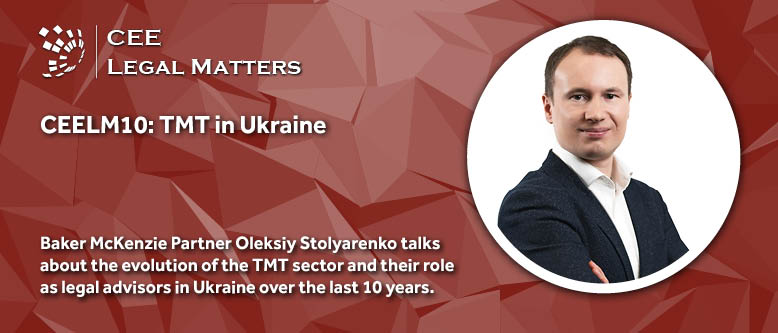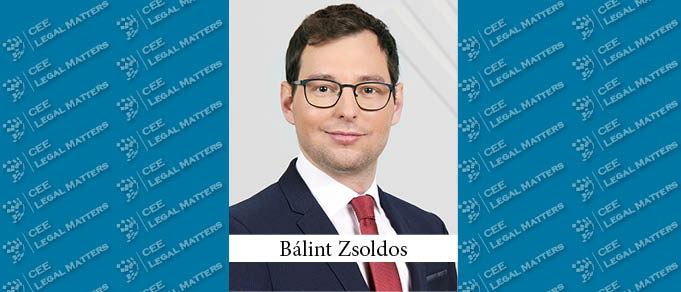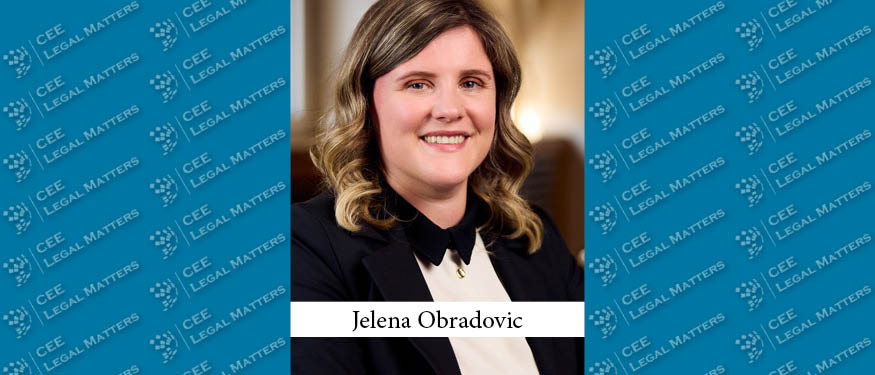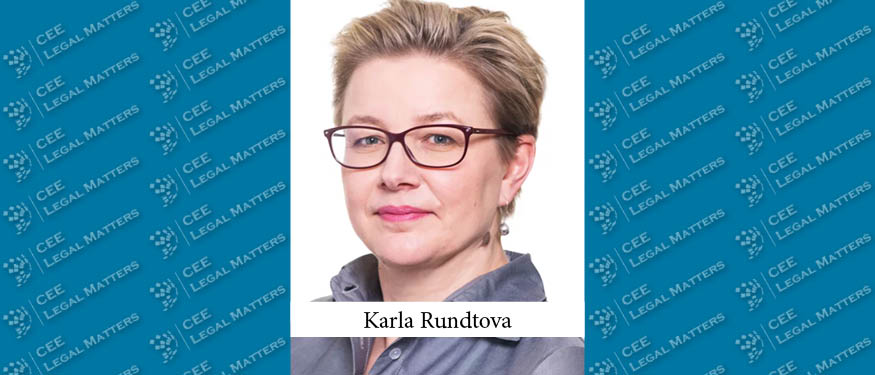Baker McKenzie Partner Oleksiy Stolyarenko talks about the evolution of the TMT sector and their role as legal advisors in Ukraine over the last 10 years.
CEELM: What types of projects in the TMT sector have been keeping your team busy?
Stolyarenko: The TMT landscape in Ukraine has undergone a significant transformation. Initially, most Ukrainian legislation in the TMT sector, including the Law on TV and Radio, was adopted in the early ‘90s, a period marked by fervent legislative activity as the country embraced its newfound independence. Throughout the ‘90s, these laws were continuously refined. From around 2010, we observed a pressing need for new regulations in the rapidly developing TMT sector. This need became critical following the 2013 Maidan Revolution, when Ukraine decisively chose not to emulate Russian legal approaches, and strongly declared its aspiration to become an EU member.
Major events such as the 2013 Maidan Revolution and the 2014 Russian aggression had also a substantial impact on the TMT sector. In 2014, the Ukrainian national currency devaluated around 200% and that led to a number of defaults within the local media companies and cable networks that had obligations before the foreign media companies in foreign currencies. Our team was quite busy at that time restructuring existing obligations, helping our clients recover outstanding debts where possible, negotiating renewals of existing licensing agreements, and revoking licenses to counterparties that due to various reasons did not perform their obligations. Many media companies, TV channels, and magazines changed hands during this period following the escape of their former owners associated with pro-Russian president Victor Yanukovych.
CEELM: Looking back at the last 10 years, what were the most intense periods?
Stolyarenko: The last five years have arguably been the most intense. We’ve seen about 70% of TMT-related laws change – a harmonization effort aligning Ukraine with the EU. This period necessitated keeping our clients abreast of numerous new regulations, including a brand new Media Law that took at least three years to adopt, and we were actively involved in work on this draft. Additionally, the adoption of around 15 new laws, including the Law on Electronic Trust Services, a new Law on Electronic Communications, a new version of the Copyright and Related Rights Law, a new Law on Collective Management Organizations, a new Law on Consumer Protection, a new Adverting Law, and a new Law on Digital Content and Digital Services marked significant steps toward EU integration. This period required us to help our clients understand updated regulatory requirements, establish new relations with government authorities, navigate updated governmental powers, manage new filings, and more.
CEELM: How have TMT client profiles changed?
Stolyarenko: Initially, in the TMT sector, we represented many international companies entering the Ukrainian market and looking for local partners or licensees. However, with time, we started to get more local work, which remained a stable trend even during the COVID times. The war, however, brought a significant change – in particular in the media sphere. Ukraine introduced a TV marathon – a united news programming produced by the country’s biggest media outlets altogether, which broadcasts 24/7 on all major Ukrainian TV channels. There is no advertising on the TV marathon, which was a substantial revenue source for these companies before the war. And that significantly impacted how these TV channels operate now and what content they distribute. Furthermore, some of the new laws, in particular a so-called “anti-oligarch” law, prompted some of the media business owners in Ukraine to abandon their media businesses for fear of being defined as such. Thus, the war and the regulatory changes are reshaping the Ukrainian media landscape, there are changes in technology and telecommunications spheres as well, so it remains to be seen what we will have here when this war is over.
CEELM: Concerning client needs in the TMT sector, what new expectations do you see emerging?
Stolyarenko: Clients now expect us not only to understand current regulations but also to anticipate future changes. Our role has evolved to include more proactive collaboration with regulators and a forward-looking approach to advising clients. This shift from merely interpreting existing laws to facilitating a dialogue with regulatory bodies and predicting future legislative trends represents a significant change in our approach to client service.
CEELM: What have been the main recurring challenges your team has faced in facilitating deals?
Stolyarenko: Primarily the pace of regulatory changes and the general uncertainty about their implementation. With courts and regulators themselves still working on understanding how these new regulations should be interpreted and enforced, a period of adjustment is inevitable. We anticipate that it may take another 4-5 years for the situation to stabilize, requiring businesses to undergo substantial restructuring in response to these comprehensive legislative changes.
CEELM: What do you believe will be the highlights in a similar interview 10 years from now?
Stolyarenko: Looking ahead, I expect the trend of adapting legislation to incorporate new digital media and services to continue. The next decade will likely involve refining these already adopted laws to ensure they are effective in regulating emerging technologies and media formats. As Ukraine aligns more closely with the EU, the focus will be on fine-tuning existing regulations and participating more actively in EU discussions. Our goal is to help clients navigate this evolving landscape and, hopefully, transition Ukraine into a full EU member state.
Baker McKenzie is CEE Legal Matters' Practice Leader for TMT in Ukraine for 2024 – learn more here.
















